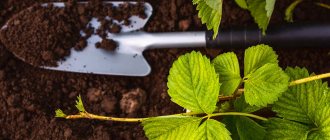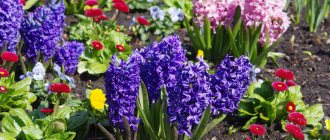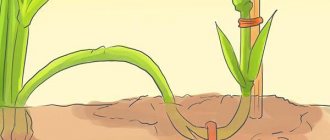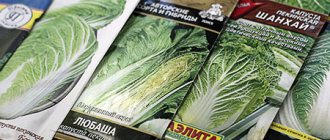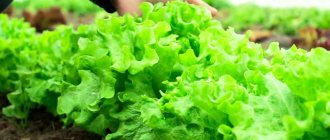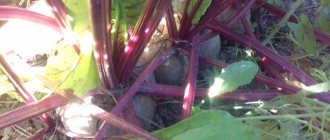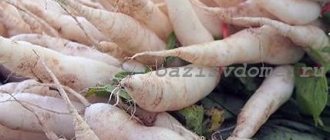The topic of choosing the timing of planting apple trees is quite relevant, since they are deservedly popular. In most regions of Russia, amateur gardeners strive to grow varieties of apples with different ripening times, so that they are available in the diet almost all year round. To reap good harvests when planting, carefully select a place on the site, properly prepare the soil and seedlings, and follow the rules of care. An important point is the choice of planting dates, which vary depending on the climate, weather, seedling variety, and intended cultivation method.
Regional climate and soil characteristics
St. Petersburg is located in the north-west of Russia in close proximity to the Atlantic Ocean. This location affects the climate. The region and St. Petersburg have high humidity and it often rains. Most of the precipitation falls in summer. The Atlantic is adjusting air temperatures. In summer it is cooler here than in the central zone, and in winter it is warmer. The Arctic approaches the Leningrad region from the north. Because of this, cold arctic air sometimes penetrates the region. In winter there are severe frosts, in summer the air temperature often drops to frost.
Landing dates
In the Leningrad region, planting apple trees is recommended in the fall. In order for the seedling to take root successfully, it is important to choose the right date. Autumn planting is possible after the end of the growing season. Plants should have finished leaf fall by this time. Such trees enter the dormant phase. The seedlings planted during this period direct their efforts to the development of the root system. The trees quickly take root and successfully survive the winter.
Important!
Apple tree seedlings are planned to be planted 15-20 days before the onset of autumn frosts. Then the plants will have enough time to adapt to new conditions.
In the Leningrad region, autumn and spring are fleeting. The first frosts begin already in October. Therefore, in the fall, apple trees begin to be planted in September. Planting is not delayed for long. The apple tree takes root successfully if it is planted while the night temperature remains above +5°C. During the day the air should warm up to +10°C. If the temperature does not reach optimal values, planting apple trees is postponed until spring.
Features of planting in different periods
Typically, fruit pome trees - pears and apples - are planted in spring or autumn, but if necessary, they can be planted in summer. Each of these options has its own characteristics, advantages and disadvantages.
in spring
Spring planting begins as early as possible, immediately after the soil thaws, in order to do so before the buds swell on the trees, that is, two to three weeks before.
One of the problems with spring planting is the possible drying out of the roots. Therefore, when purchasing seedlings, you need to make sure that the plants are protected from bright sunlight and the roots remain sufficiently moist.
The second difficulty is the short time for planting work. It must be remembered that in the spring you should not delay planting trees and wait until the soil warms up well. It is recommended to begin the planned work as soon as the soil thaws and it becomes possible to dig planting holes.
Experienced gardeners often prepare holes in advance, in the fall, fertilizing the soil with organic matter - manure, compost, peat or humus
However, these disadvantages are offset by advantages. The main advantage of spring planting is that over the summer the trees have time to take root, form a sufficient number of new roots and adapt to the new location. If you follow all agrotechnical recommendations, the apple trees take root well and tolerate the winter months normally.
The second advantage is that in the spring nurseries offer a large assortment of seedlings, so you can choose the varieties of interest that are best suited for the garden.
Spring planting is recommended for one-year-old seedlings and apple tree varieties that are not highly frost-resistant. It is also most justified in areas where clayey and too wet soils predominate.
in autumn
Many gardeners prefer to plant apple trees in the fall, as during this period comfortable weather conditions are created for gardening work and there is more time available. Autumn tree planting begins with the beginning of mass leaf fall in the garden. By this time, the wood of young seedlings is already ripening. It is important to remember that planting must be completed no later than 25 days before stable frosts appear on the soil surface.
The main period of autumn planting of apple trees lasts from September to mid-October
Frost-resistant varieties withstand winter more easily when planted in autumn, but in order to protect them from freezing, it is recommended to hill up the trunk, wrap the trunk and skeletal branches with non-woven materials and cover the trunk circles with spruce branches or mulch with a thick layer of straw. In winter, it is advisable to carry out snow retention measures. If sudden temperature changes are observed, it is recommended to pour snow into tree trunk circles and trample them down to protect the roots.
Autumn planting of trees is especially undesirable in those regions where winters have little snow and the soil is heavy clay - such conditions are unfavorable for the rapid establishment of seedlings.
In summer
As already mentioned, you can plant container plants in the summer. Such trees are not grown in open ground, but in separate containers filled with light soil.
When planting apple trees grown in containers, the roots do not need to be freed from the soil in which they grew. The plant should be carefully removed from the container along with the earthen lump and placed in a hole. If the roots are too tangled, you can straighten them a little or trim them.
When purchasing seedlings with a closed root system, the condition of the tree can be easily assessed by its appearance
For container trees, regular watering is very important, especially if planting is carried out at the end of May or June, when the growing season is active. Their root system is compact, quite dense and has a great ability to absorb moisture.
Variety selection
Seedlings are selected taking into account climate, soil characteristics, and groundwater depth. If necessary, soil fertility can be improved. But it is difficult to combat the close occurrence of groundwater. Dwarf varieties of apple trees are more suitable for such conditions. Their root system is shallow. If you don’t need to limit yourself in choice, you can plant trees of regular sizes.
Summer varieties that can be grown in the Leningrad region:
- White filling is a widely known variety with tasty fruits. Fully ripe apples fill with juice and become translucent. The plant has good frost resistance. The first harvest is harvested 5-6 years after planting. Apples reach a weight of 150 g.
- Memory Lavrik - a variety bred by workers at the Leningrad experimental station. Externally, the fruits resemble Papirovka, but are much larger. On average, their weight reaches 200 g. The fruits of this variety have a high content of vitamin C.
Varieties with autumn ripening that can be grown in the Leningrad region:
- Melba is a Canadian variety grown throughout the country. The apples are large with excellent taste. The plant tolerates winter frosts well. The first harvest is harvested in the fourth year.
- Uslada is a variety bred by breeder Isaev. The semi-dwarf species has compact dimensions. Ruddy fruits with a dessert taste are covered with yellow-green stripes and light dots. Regular fruiting begins in the fourth year. The variety is resistant to scab, which often affects plants in this region.
Winter varieties of apple trees suitable for growing in the North-West region:
- Antonovka is a well-known, ancient variety that tolerates low temperatures well. The plants are large, spreading and produce medium-sized fruits.
- A gift to Grafsky - a variety with excellent winter hardiness produces tasty, large fruits of purple-red color. If stored properly, apples do not spoil until April.
Advice!
To increase productivity, proper crown formation is necessary.
If the garden plot is small, columnar apple trees are chosen for the Leningrad region: Medok, President, Vasyugan. Thanks to their compact crown, they take up little space on the site. The root system of trees goes shallow. Therefore, they can be planted even in areas with highly suitable groundwater. For reliability, seedlings are placed on a bulk bed.
Features of placing apple trees on the site
The taste of apples, the degree of ripening, the size of the fruit, early ripening and the growth of the tree itself depend on how much sunlight falls on the plant. If you have a lot of trees in your plans, try to place them in rows: it is better to plant the tallest varieties closer to the northern edge of the site, and the short ones to the south. Then the sun will evenly illuminate all the trees, and they will not overlap each other.
Choosing the right location is one of the most important preparatory steps. It is necessary to create enough space for the root system of the apple tree. The recommended norm is 3 meters from the border of the site, 4 meters from another tree. Please note that the apple tree will not take root well with some trees. It is better not to plant next to apricots, cherries and mountain ash.
Selection of seedlings
Trees for planting are purchased from trusted stores or gardening centers. They come with open or closed roots. For planting, grafted plants are taken, not their own roots. They can be distinguished by a noticeable thickening in the lower part of the trunk. Buy only healthy plants without damage, cracks, or signs of pest or disease infestation. Plants 1-2 years old are suitable for planting. Older ones get along much worse.
Choose plants 1-1.5 m high. There is no need to buy specimens that are too tall and covered with green leaves. This condition indicates overfeeding with nitrogen fertilizers. The growth process in them is not complete. Therefore, in winter they die from frost. Low-growing, frail specimens are also not accepted. They have low vitality or have been poorly cared for.
Planting apple trees
For a fruit tree, choose a place well lit by sunlight on a hill. If the variety is tall, planting holes are made at intervals of 5 m or more. For medium-sized plants, a gap of 4 m is left. Dwarf and columnar varieties are placed in increments of 3 m. The size of the planting hole depends on the characteristics of the soil. If the clay content is high, holes are made 1 m in diameter and 40 cm deep. If the soil is fertile, dig a hole 90 cm in diameter, deepening it to 60 cm.
To properly plant an apple tree, a hole is dug in advance in the fall, 2-4 weeks before the planned planting date. Separately prepare the soil for backfilling the plant. It is mixed from:
- 20 liters of humus;
- 200 g superphosphate;
- 150 g potassium chloride.
Advice!
Instead of mineral fertilizers, you can use 1 kg of wood ash for the specified amount of humus.
When planting, be sure to install a peg or narrow board for support. It is placed on the south side to protect the young plant from the scorching rays of the sun.
With bare roots
A day before planting, exposed roots are dipped into a solution of any root formation stimulator. The drug is diluted in strict accordance with the instructions. Before soaking, the roots are inspected. If necessary, all damaged areas are cut off with a sharp knife, and the cut areas are powdered with crushed coal.
A portion of the soil prepared in advance is poured into the center of the planting hole, forming a small mound from it. Stepping back a little, install a peg for support. The seedling is placed on an earthen hill. The roots are spread to the sides. The free space is filled with the remaining soil. Periodically shake the tree a little so that all the voids are filled. Then water the plant with 10 liters of warm water. When the moisture is absorbed, add more soil so that the root collar is not buried.
After planting, the soil around the trunk is compacted. At a distance of 50 cm from the trunk, a groove is made for irrigation. The tree trunk circle is mulched with organic matter. The central trunk is pinched to stimulate the formation of lateral branches.
With closed roots
A hole for planting a seedling with closed roots is made in the usual way. On the day of planting, water the plant in the container to make it easier to remove. When the soil softens, turn the pot over and carefully release the seedling. The tree is placed in a hole without deepening the root collar. You can place the plant so that the level in the pot is slightly higher. A peg is placed nearby for support. All free areas in the hole are covered with pre-prepared soil and the plant is watered with warm water.
Planting in clay soil
With a high clay content in the soil, the risk of seedling death remains high. Such soil requires shallow planting. Therefore, they do not make a hole for planting. The soil for backfilling is prepared in the usual way. The area where the apple tree will grow is dug up and cleared of weeds. Hay, cut grass or rotted sawdust are placed on top. A stake is driven in nearby for support. Pour in soil and compact it.
Sod measuring 40x40 cm is laid in the center of the prepared area. It is turned over with the grass facing down. A tree is placed on top. Cover it with fertile soil. It turns out to be a gentle mound. Its slopes are compacted. A groove is made around the perimeter for irrigation. The tree trunk circle is mulched with straw.
On a note!
The surface method is used for planting apple seedlings with closed roots.
Planting in frost
Sometimes a seedling is bought too late, when the region has already become colder and even frosts have begun. Some gardeners plant an apple tree despite unsuitable weather conditions. Experts do not recommend doing this. It is better to postpone planting until spring. Otherwise, the plant does not have time to take root and dies in winter from frost.
Until spring, the seedling is stored in a cellar or basement. The roots are placed in a bucket of sawdust or covered with peat. The room temperature is maintained at about 0°C. The plant is watered with a moderate amount of water weekly. With the onset of spring, when the soil warms up, the seedling is planted on the site.
Preparing the planting pit and choosing a location
At the site where the seedling is to be planted, apple trees should not grow for 5 years. This is because trees release waste into the soil and it accumulates over time. And having planted a young apple tree in the place of an uprooted tree with a large amount of waste from the old apple tree, it will be difficult for the young tree to survive in such conditions.
An apple tree of any variety grows well in a sunny area, a slightly elevated place, protected from northern winds. Trees react painfully to excess moisture near the roots and root collar. To prevent this from happening, decide on a drainage system and disposal of melt and rain water.
Loose and fertile soil is suitable for planting apple tree seedlings.
It’s better when you start preparing a month before planting the seedlings. The dimensions of the pit are approximately the following: depth about 70 cm, width 1x1 m with vertical walls. When removing the soil from the hole, fold the fertile layer (40 cm) separately next to the hole.
Prepare a nutrient mixture for planting (fertile soil is mixed with rotted manure and leaf compost in equal proportions, also add 5 kg of wood ash).
Care after landing
In the first year after planting, a young apple tree especially needs careful care. The newly planted tree is tied to a support. To prevent injury, make a weak knot using a soft rope. Before the first frost, the plant is watered 1-2 times. When the temperature drops below 0°C, soil moisture is stopped.
Immediately after planting, pruning is performed. Then the plant directs its forces to the formation of the root system, and not to the development of the above-ground part. The tree is shortened to a height of 1 m. The plant is additionally insulated so that it does not freeze in winter from the cold. To do this, the trunk is wrapped in burlap or agrofibre.
The soil in the tree trunk circle is mulched. The protective layer will prevent the soil from drying out and protect the root system from frost. Peat, compost, and humus are used as mulch. The layer is made at least 7 cm thick. A gap of 5 cm is left between the plant and the plant material. This space is necessary to prevent the bark from heating up.
In winter, the trunk of a young apple tree can be chewed by hares or mice. To protect it from animals, the trunk is wrapped with a strong mesh or a plastic bottle with the neck and bottom cut off is placed on it. It is cut lengthwise and then tightly fixed to the trunk with tape.
Many gardeners successfully grow apple trees even in the cool, humid climate of the Leningrad region. To do this, seedlings are planted in the fall after the end of leaf fall and the end of the growing season. For a rich harvest, only zoned varieties adapted to soil and climate conditions are taken. With good care, the plant successfully survives the first winter and soon begins to bear fruit.
Seedling care
Pruning dry branches and systematic, timely watering are components of successful apple growing and tree resistance to frost.
It is enough to water first-year seedlings 3-4 times in the summer, pouring up to 4 buckets of water down their roots, provided there is no drought.
You may be interested in our publications:
- How to properly grow an apple tree from a seed or branch at home?
- When to pick apples for storage? And how to do it correctly.
- 5 ways to freeze apples at home.
Constantly loosen the soil under the bush and prevent weed growth .
If flowers appear in the second year, they are usually removed , as it is a barren flower. After receiving the fruit for the first time, trim the branches, removing dry ones.
Until mid-summer, it is important to do at least five nitrogen fertilizing , based on mineral and biological fertilizers.
A planted apple tree needs watering, fertilizing and plucking primroses.
